Analysis of Malcolm Williamson's cassations
Papers for the ASME conference are limited to two Figures and two Tables. Therefore I have provided more examples of the analysis performed on this webpage which can be referenced when reading the paper. This analysis has been written up in both my Ph.D. and a paper I have submitted for publication.
- The Moonrakers (1967)
- Knights in Shining Armour (1968)
- The Snow Wolf (1968)
- Genesis (1971)
- The Stone Wall (1971)
- The Winter Star (1973)
- The Glitter Gang (1973-4)
- Other analyses/excerpts
- List of all cassations
1.Structural table
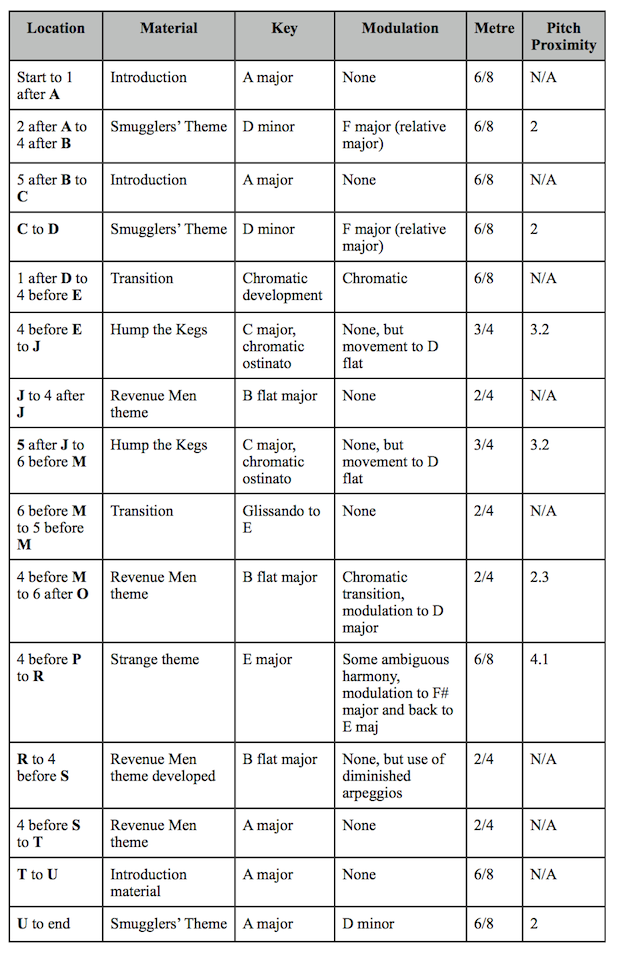
2.Vocal range of parts in The Moonrakers.
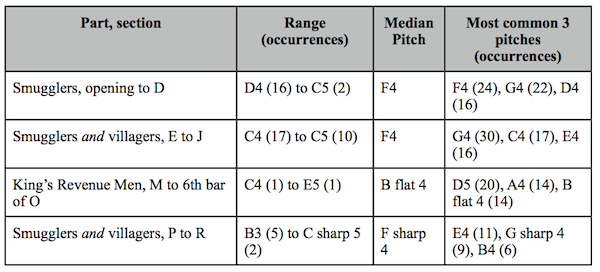
3.Vocal range of parts in The Moonrakers expressed as a graph.

4.The arpeggiated Strange theme which results in a high Pitch Proximity value.
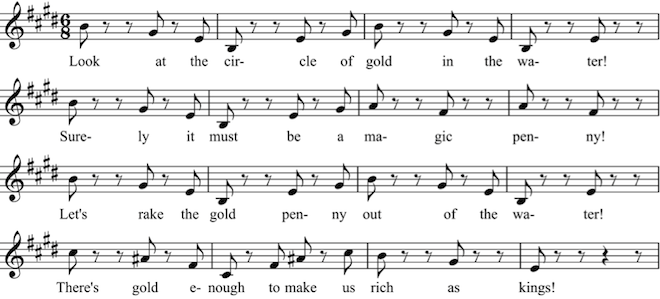
5.Structural Map of Knights in Shining Armour.
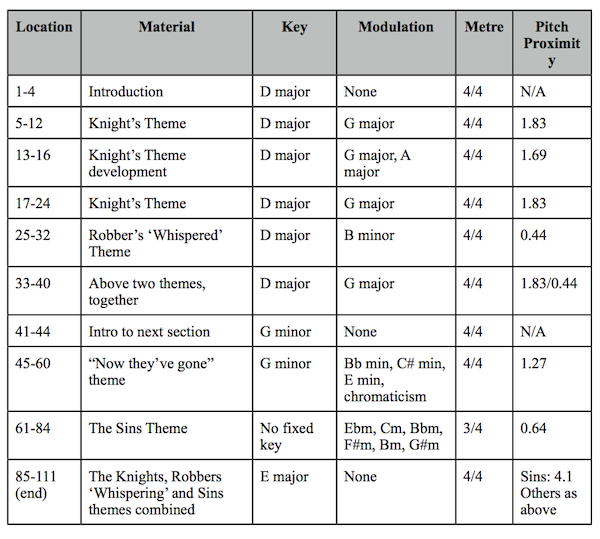
6.Vocal range of parts in Knights in Shining Armour..

7.Harmonic analysis of bars 5 to 12 of Knights in Shining Armour.
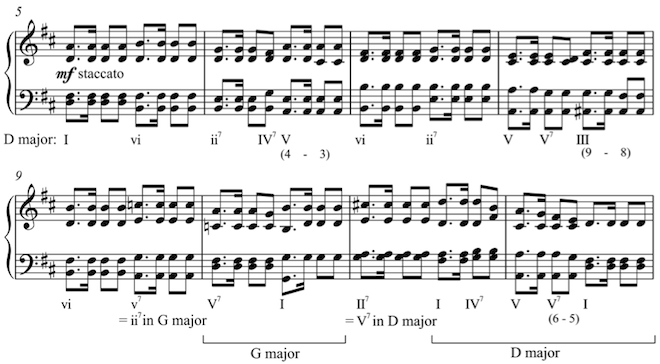
8.Harmonic analysis of bars 13 to 16 of Knights in Shining Armour.

9. Harmonic analysis of bars 25 to 32 of Knights in Shining Armour.

10. Vocal ranges in The Snow Wolf.

11. The structural outline of The Snow Wolf.
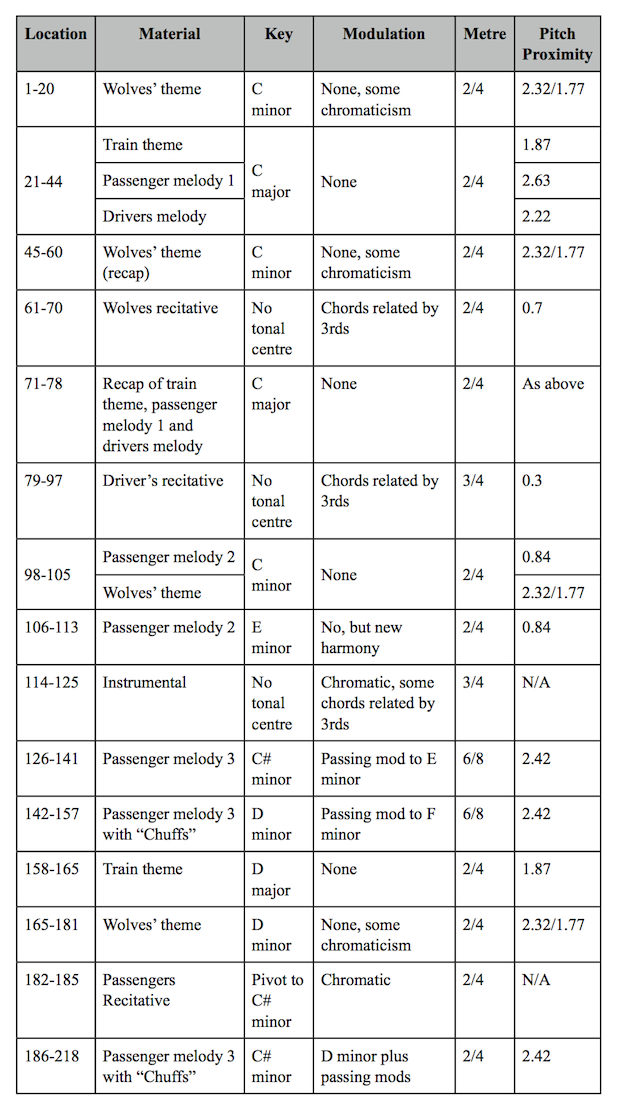
12. The simple harmonic progression in the second section of The Snow Wolf.

13. Harmonic analysis of bars 79 to 97.

14. Vocal ranges in Genesis.

15. The structural outline of Genesis.
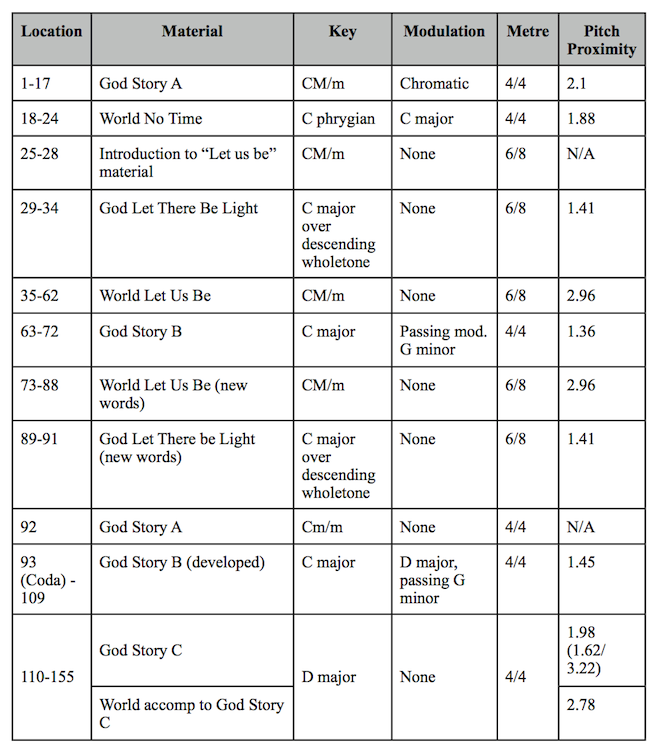
16. Boxes indicate the use of C major and C minor chords at the same time.

17. The two accompaniment patterns Williamson employs in the opening section of Genesis.

18. The opening melody of Genesis.

19. The piano part at bar 29 contrasting C major chords in the right hand with a falling whole tone scale in the left.

20. Harmonic analysis of the repeated and varied progression in the final section.

21.At bar 140 the progression is further simplified and then repeated exactly for the remainder of the work.
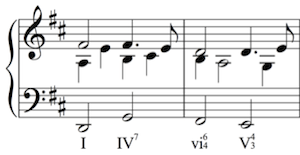
22. Structural outline of The Stone Wall.
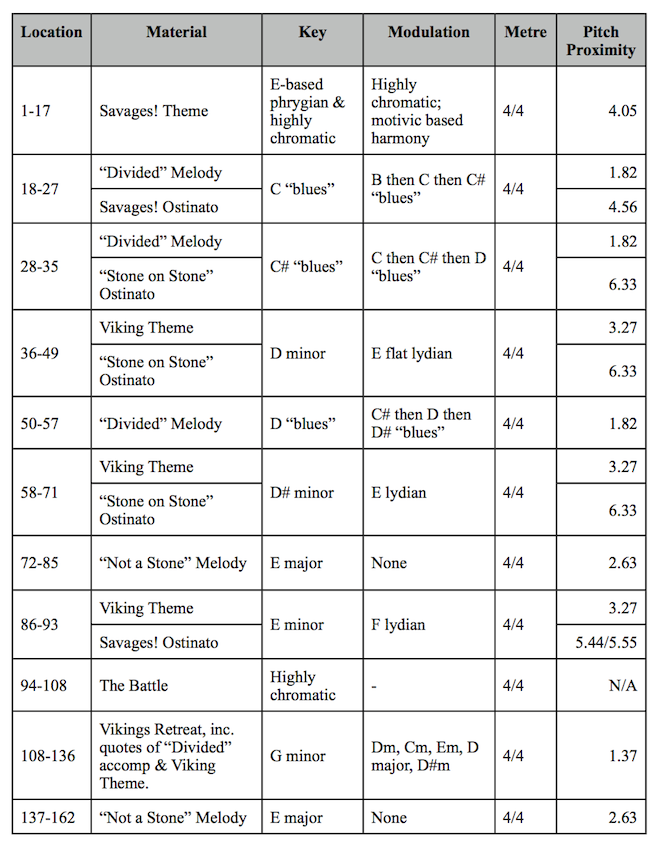
23. Vocal ranges of parts in The Stone Wall.

24. The opening chords in the right hand of the piano part in The Stone Wall.

25. The vocal opening in The Stone Wall.
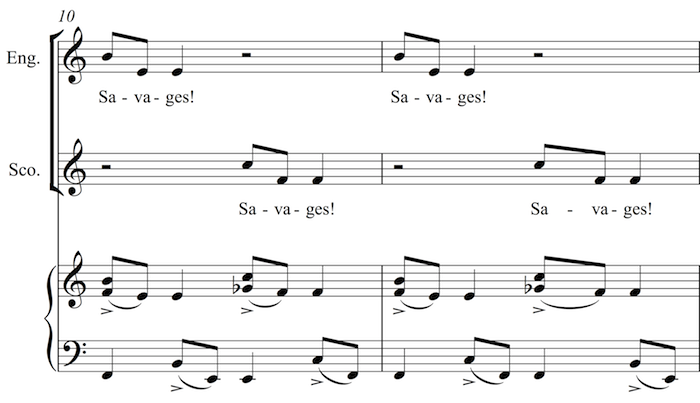
26. The pentatonic "Blues" scale used in The Stone Wall.

27. Piano accompaniment at bar 36 of The Stone Wall.

28. Harmony accompanying the "Not a stone" melody.
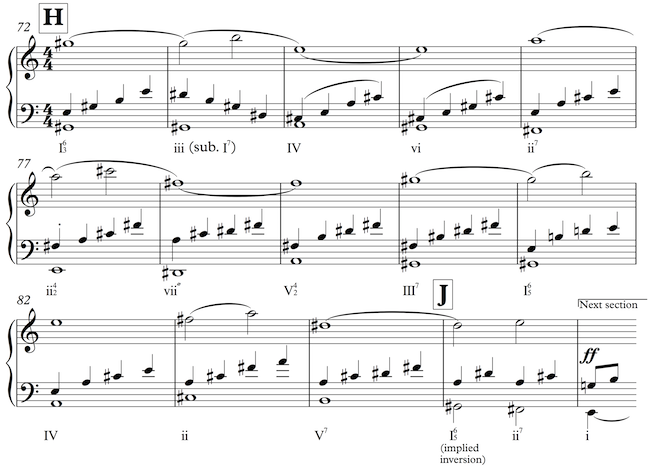
29. The series of modulations in the Vikings retreat.
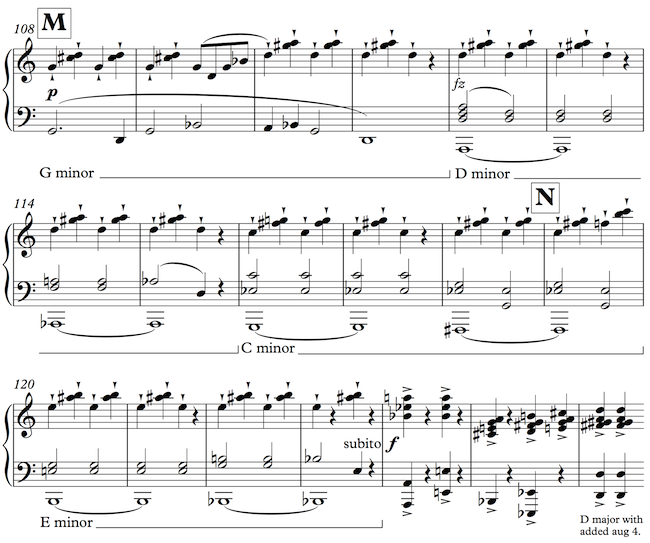
30. Structural summary of The Winter Star.
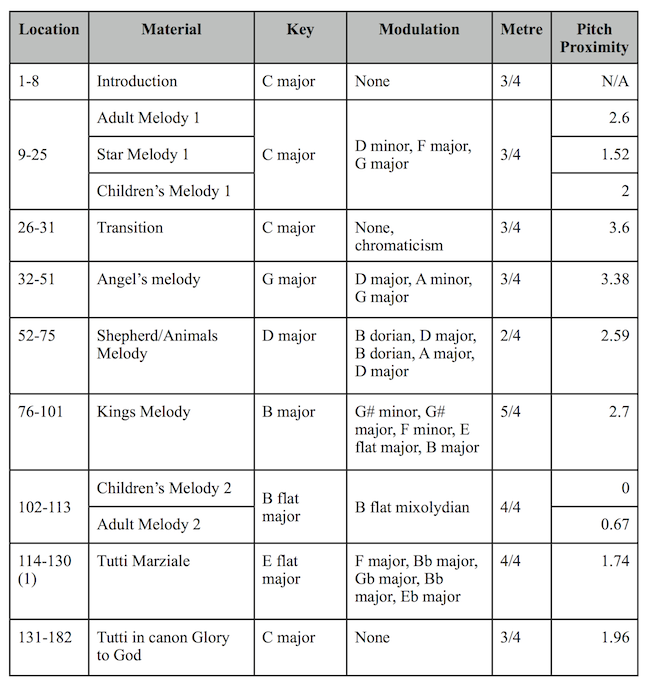
31. Vocal ranges in The Winter Star.
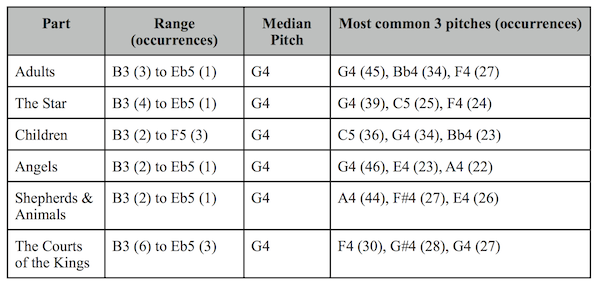
32. Harmonic analysis of the second section of The Winter Star.
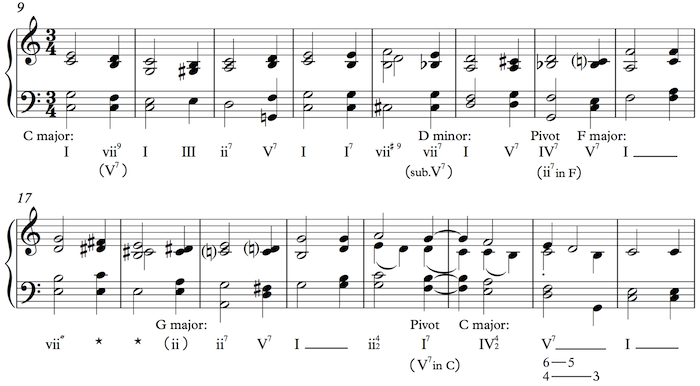
33. Harmonic analysis of bars 36 to 51.
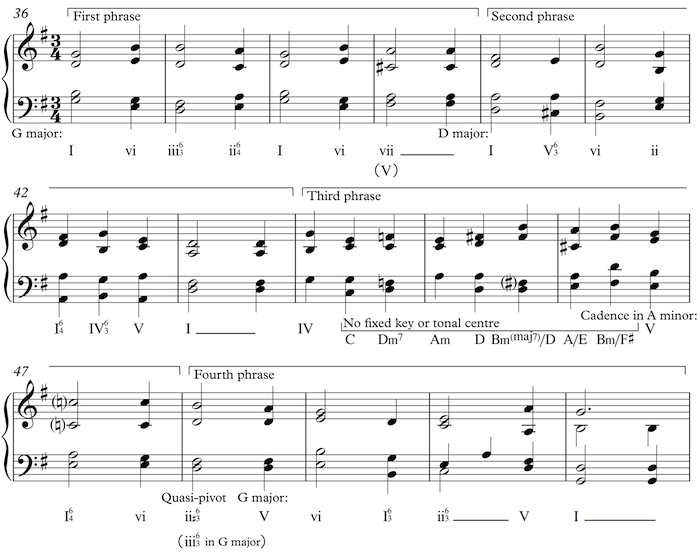
34. The rhythmic pattern on which the Shepherds and Animals material is based.

35. Analysis of the Kings melody section.
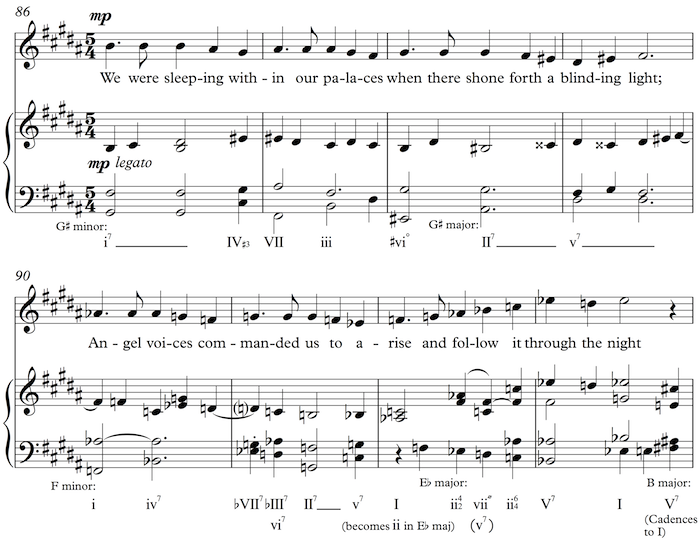
36. Harmonic analysis of the Tutti Marziale.
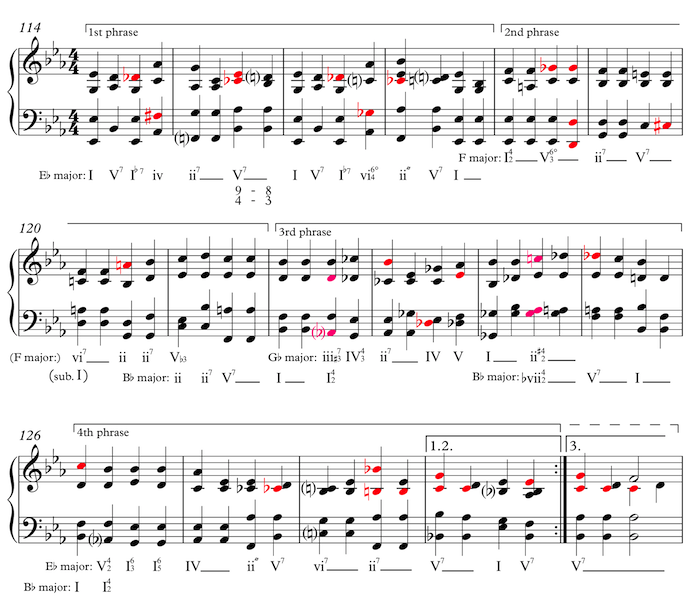
37. Vocal ranges in The Glitter Gang.

38. Structural outline of The Glitter Gang.

39. Harmonic analysis of the accompaniment to the Europeans’ theme.

40. Australians “Stranger” theme, bars 41 to 49.

41. The “Meeting”, bars 63 to 78 of The Glitter Gang.
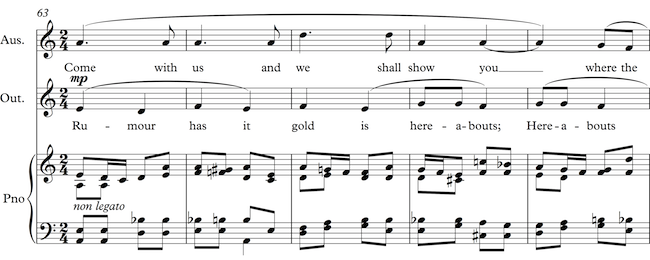
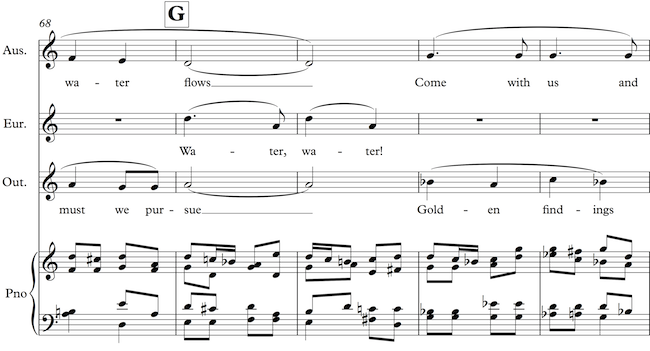
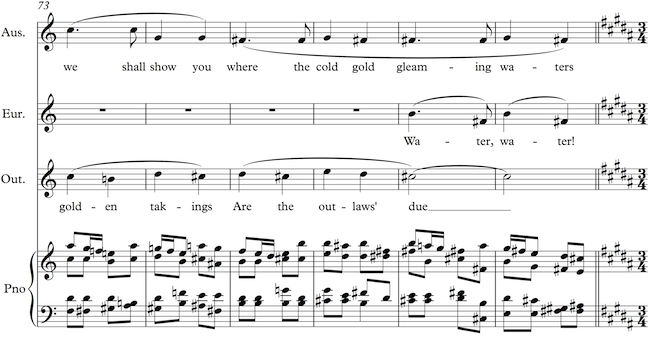
42. Harmonic analysis of the right hand of the piano and the Australians’ vocal line.

43. Harmonic analysis showing the Outlaws and the left hand of the piano.
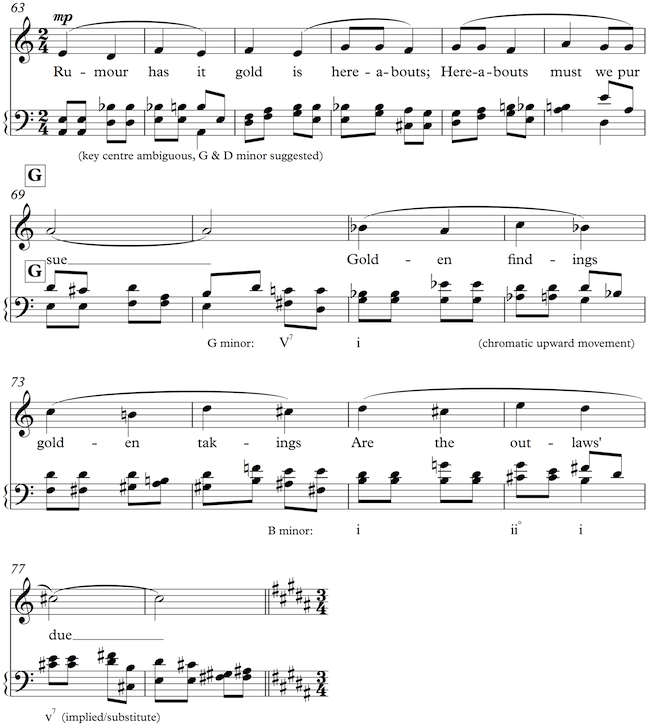
44. The Australians’ “Who would not help a stranger?” theme at letter M.

45. The “galloping horses” accompaniment.

46. Ranges in all seven cassations analysed.
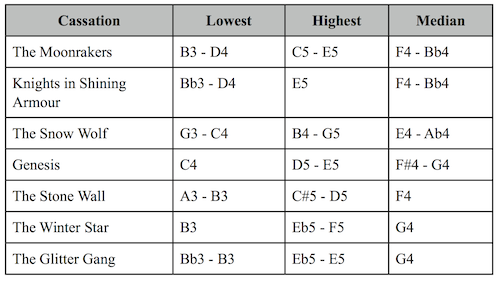
47. The harmony in the opening of The Winter Star.

48. Pitch Reversal Values (Schellenberg 1997) in the vocal line bars 9 to 24 of The Winter Star.
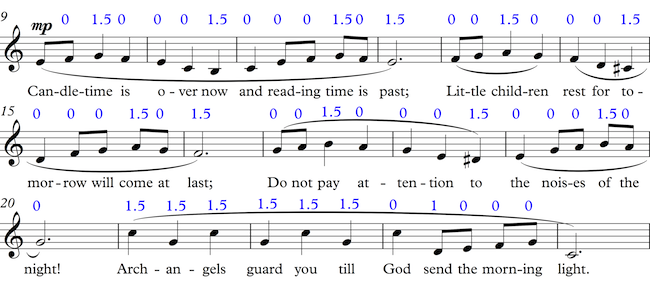
49. The piano introduction to The Stone Wall.

The Moonrakers (1967, published by Josef Weinberger)
Knights in Shining Armour (1968, Josef Weinberber)
The Snow Wolf (1968, Josef Weinberger)
Genesis (1971, Josef Weinberger)
The Stone Wall (1971, Josef Weinberger)
The Winter Star (1973, Josef Weinberger)
The Glitter Gang (1973-4, Josef Weinberger)
La Tèrre des Rois (‘The Terrain of the Kings,’ 1974, Bureau de Musique Mario Bois)
The Valley and the Hill (1977, Campion Press)
The Devil’s Bridge (‘Le Pont du Diable,’ 1982, Campion Press)